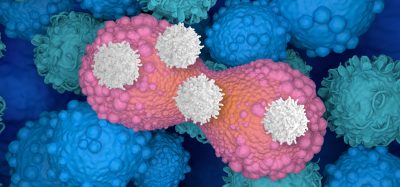Groundbreaking data tool may uncover novel class of GPCRs
Posted: 27 October 2021 | Anna Begley (Drug Target Review) | No comments yet
A new computer-aided tool maps allosteric sites in G protein-coupled receptors to search for allosteric drugs to treat a range of diseases.


Scientists at Queens University Belfast, Northern Ireland, have developed a computer-aided data tool that could uncover a novel class of G protein-coupled receptors (GPCRs) and lead to treatment for a range of illnesses.
GPCRs are the largest membrane protein family that transduce a signal inside cells from hormones, neurotransmitters and other endogenous molecules. As a result of their broad influence on human physiology, GPCRs are drug targets in many therapeutic areas such as inflammation, infertility, metabolic and neurological disorders, viral infections and cancer. Currently over a third of drugs act via GPCRs. Despite the substantial therapeutic success, the discovery of GPCR drugs is challenging due to promiscuous binding and subsequent side effects, the team explained.
Recent studies have uncovered the existence of allosteric sites that drugs can bind to and provide several therapeutic benefits. However, the discovery of allosteric sites and drugs has been mostly serendipitous. Recent X-ray crystallography and cryo-electron microscopy that offers three-dimensional (3D) models of several GPCRs offer opportunities to develop computer-aided methodologies to search for allosteric sites.
The researchers developed a computer-aided protocol, detailed in ACS Central Science, to map allosteric sites in GPCRs with a view to start rational search of allosteric drugs, presenting the opportunity for new solutions and therapies for a range of diseases.
Biomarkers are redefining how precision therapies are discovered, validated and delivered.
This exclusive expert-led report reveals how leading teams are using biomarker science to drive faster insights, cleaner data and more targeted treatments – from discovery to diagnostics.
Inside the report:
- How leading organisations are reshaping strategy with biomarker-led approaches
- Better tools for real-time decision-making – turning complex data into faster insights
- Global standardisation and assay sensitivity – what it takes to scale across networks
Discover how biomarker science is addressing the biggest hurdles in drug discovery, translational research and precision medicine – access your free copy today
According to the team, the computer modelling tool will predict novel sites of binding for potential drugs that are more selective, leading to more effective drug targeting, increasing therapeutic efficacy and reducing side effects. Specifically, the data tool or protocol will uncover a novel class of compounds – allosteric drugs in GPCRs.
NEWS: Algorithm helps find best drug targets for all COVID-19 variants – READ HERE
“We have developed a novel, cost-effective and rapid pipeline for the discovery of GPCRs allosteric sites, which overcomes the limitations of current computational protocols such as membrane distortion and non-specific binding,” claimed senior author Dr Irina Tikhonova. “Our pipeline can identify allosteric sites in a short time, which makes it suitable for industry settings. As such, our pipeline is a feasible solution to initiate structure-based search of allosteric drugs for any membrane-bound drug targets that have an impact on cancer, inflammation, and central nervous system (CNS) diseases.”
Related topics
Analytical Techniques, Drug Discovery, Drug Targets, GPCRs, Informatics, Microscopy, Molecular Modelling, Molecular Targets, Technology
Related organisations
Queen's University Belfast
Related people
Dr Irina Tikhonova








